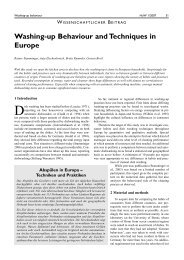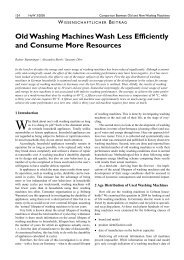Development of a novel mechatronic system for mechanical weed ...
Development of a novel mechatronic system for mechanical weed ...
Development of a novel mechatronic system for mechanical weed ...
Create successful ePaper yourself
Turn your PDF publications into a flip-book with our unique Google optimized e-Paper software.
Materials and methods<br />
process and compiled into the executable machine code when requested to run<br />
as an application. Developed VI can be run under the LabVIEW environment or<br />
as a stand-alone application. Furthermore, it is possible to create distributed<br />
applications which communicate by a client/server scheme, and thus is easier<br />
to implement due to the inherently parallel nature <strong>of</strong> G-code.<br />
One benefit <strong>of</strong> LabVIEW in relation to other development environments is the<br />
extensive support <strong>for</strong> accessing instrumentation hardware. Drivers and<br />
abstraction layers <strong>for</strong> many different types <strong>of</strong> instruments and buses are<br />
included or are available <strong>for</strong> inclusion. The abstraction layers <strong>of</strong>fer standard<br />
s<strong>of</strong>tware interfaces to communicate with hardware devices.<br />
Generally, code can be slower than equivalent compiled C code, although the<br />
differences <strong>of</strong>ten lie more with program optimization than inherent execution<br />
speed.<br />
A benefit <strong>of</strong> the LabVIEW environment is the plat<strong>for</strong>m independent nature <strong>of</strong> the<br />
G-code, which is portable between the different LabVIEW <strong>system</strong>s <strong>for</strong> different<br />
operating <strong>system</strong>s such as Windows, Mac-OS and Linux. Code can be<br />
uploaded onto an increasing number <strong>of</strong> targets including devices like Phar Lap<br />
OS based LabVIEW real-time controllers, Pocket PC-s, PDA-s, FieldPoint<br />
modules and into FPGA-s on special boards.<br />
40<br />
4.1.3 Experimental field<br />
Experiments were conducted in a particularly prepared soil box containing three<br />
different soil types, representing the most frequently appearing types in<br />
Germany. Total length <strong>of</strong> the soil box was 9 metres and it was divided into three<br />
equal parts. The first partition was filled with a sandy soil containing 56.9%<br />
sand, 34.5% silt and 8.6% clay. The second partition was filled with a silty soil<br />
containing 10.7% sand, 71.8% silt and 17.5% clay. The last partition was filled<br />
with a clay soil containing16.1% sand, 52.6% silt and 45.6% clay. The<br />
experimental field was 2 metres wide providing a possibility to drive the carrier<br />
over the soil surface through several crop rows positioned parallel to each<br />
other.





